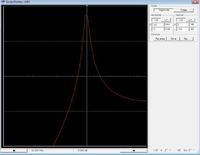franken35
Newbie level 6
Hello, I have designed an LC bandpass filter. Now I am trying to assemble it on veroboard in order to test it. I received an advice to determine series loss resistance and add equivalent loading capacitor. However I don't know how to measure this series resistance. Does anyone know how to do it?
The way I am testing this filter is by inserting a signal into veroboard by signal generator and the output to spectrum analyzer. I have a simulation of my filter in multisim. I attached it.
My center frequency is 38.2 MHz and the passband is 2 MHz. I used bandpass filter design with coupling capacitor to match the impedance and then changed the values slightly to find the appropriate components.
So could anyone let me know if the design if fine and how to determine the series loss resistance and I presume the equivalent loading capacitor I need to add it at the filter end to coupling capacitor, is it?


The way I am testing this filter is by inserting a signal into veroboard by signal generator and the output to spectrum analyzer. I have a simulation of my filter in multisim. I attached it.
My center frequency is 38.2 MHz and the passband is 2 MHz. I used bandpass filter design with coupling capacitor to match the impedance and then changed the values slightly to find the appropriate components.
So could anyone let me know if the design if fine and how to determine the series loss resistance and I presume the equivalent loading capacitor I need to add it at the filter end to coupling capacitor, is it?

